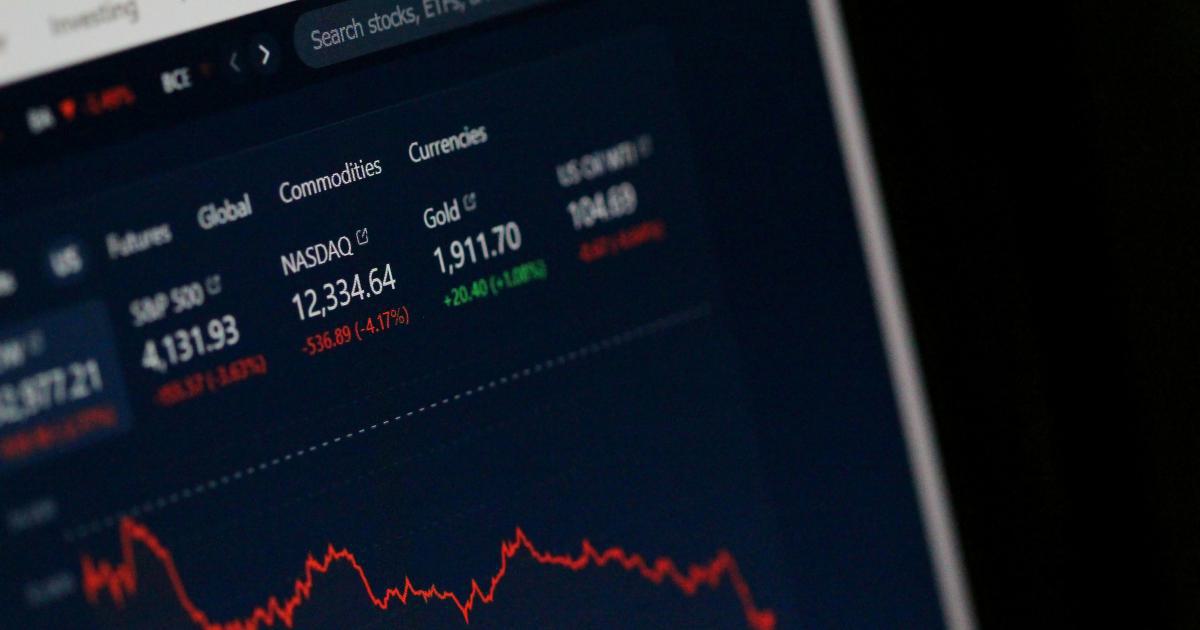How to Effortlessly Master Position Sizing Risk Minimization

Mastering position sizing risk minimization can be a game changer for any trader or investor. In the high-stakes world of trading, understanding how to properly scale your positions while minimizing risk is essential to maintaining a robust portfolio and avoiding catastrophic losses. This article dives deep into how to effortlessly master position sizing risk minimization, providing actionable strategies, real-world examples, and detailed explanations that will help both beginners and seasoned professionals optimize their trading approaches.
Introduction
Trading and investing involve constant decision-making regarding risk management. One of the critical skills necessary in this domain is mastering position sizing risk minimization. When properly applied, these techniques can help traders protect their capital during volatile markets and optimize their returns when conditions are favorable. This article is designed to provide an in-depth look at the methods that allow you to adjust your trading positions in a way that minimizes risk while maximizing potential reward.
In today’s uncertain financial environment, proper risk management isn’t just an option—it’s a crucial part of any successful investment strategy. By learning how to efficiently manage your positions, you reduce the impact of adverse market movements and create a stable foundation for growth. Throughout this article, we will expound on what position sizing entails, explore various strategies for risk minimization, and provide actionable steps that you can implement in your trading routine.
Understanding the Fundamentals
Before diving into detailed strategies, it is necessary to understand the cornerstone concepts behind position sizing and risk minimization.
What is Position Sizing?
Position sizing is the process of determining the amount of capital to allocate in any given trade. Unlike simply choosing what assets to invest in, position sizing directly affects your potential profit and loss. It is a deliberate process that takes into account several variables such as account size, risk tolerance, and market conditions. The aim is to ensure that even if a trade doesn’t go as planned, the negative impact on your portfolio is limited.
Proper position sizing is not a one-size-fits-all approach; it must be tailored to the individual trader’s objectives and risk appetite. For example, some traders use a fixed fractional approach, risking a small percentage of their capital on any one trade, while others might adjust the amount based on volatility or other risk parameters.
What is Risk Minimization?
Risk minimization involves a set of strategies and practices designed to reduce the negative impact of market volatility on your trading capital. It extends far beyond merely placing a stop-loss order. Risk minimization includes diversifying across assets, continuously reviewing market conditions, and adjusting trade sizes based on current volatility. When combined with effective position sizing, risk minimization methods provide a robust framework that shields your portfolio from large, unexpected market moves.
Risk minimization is as much an art as it is a science. It requires constant monitoring, analysis, and discipline. It is about setting appropriate risk thresholds and ensuring that each trade adheres to your predetermined risk parameters. The goal is to manage the inevitable ups and downs of the markets without letting emotions drive your decisions.
The Interplay Between Position Sizing and Risk Minimization
The synergy between position sizing and risk minimization can determine the long-term success of your trading strategy. Position sizing helps define the scale of your exposure on each trade, limiting potential losses and allowing you to weather the inevitable market fluctuations. Concurrently, risk minimization strategies ensure that your losses are contained within acceptable limits. Together, they form a comprehensive approach to safeguarding your trading portfolio, enabling disciplined and calculated decision-making.
A balanced strategy that combines both position sizing and risk minimization can make your portfolio more resilient against market volatility. Rather than risking too much on a single trade, a well-executed plan spreads the risk, ensuring that no single loss can significantly debilitate your overall position.

In-depth Strategies for Position Sizing
To master position sizing risk minimization, it's critical to understand various strategies for determining the optimal size of each trade. In this section, we’ll examine several proven techniques and provide guidelines for their implementation.
Fixed Fractional Method
One popular and straightforward method is the fixed fractional approach. This strategy involves risking a predetermined percentage of your trading capital on each trade. A typical value might be 1-2% of your account per trade. By committing only a small portion of your capital to any single transaction, you limit its potential impact on your overall portfolio.
Key Benefits:
- Simplicity and ease of calculation.
- Prevents overexposure to any one position.
- Easily scalable regardless of the size of your portfolio.
Example: Suppose you have a $10,000 account and you decide to risk 2% per trade. That means you would risk no more than $200 on any given trade. If your stop-loss is set 10 pips away, then the position size you should take can be carefully calculated so that a 10-pip movement does not exceed your $200 risk limit.
Percentage Risk Model
The percentage risk model is closely related to the fixed fractional method. It involves setting a fixed percentage of your account as the maximum loss for each trade, but it also allows adjustments based on market conditions. This method is adaptive, taking into account the volatility or the specific risk scenario of a trade.
How It Works:
- Determine a percentage of your capital to risk.
- Calculate the amount in dollars that percentage represents.
- Based on your stop-loss distance, calculate the number of units or shares to purchase.
- The formula helps ensure that irrespective of the trade’s outcome, losses remain within a pre-designated limit.
The Kelly Criterion
For those inclined towards more mathematical models, the Kelly Criterion offers a formulaic way to determine the optimal bet size. It considers the probability of winning versus the probability of losing, as well as the potential payoff. Although the Kelly Criterion is more commonly used in gambling and sports betting, its principles can be applied to trading.
Key Advantages:
- The technique provides an optimal size that maximizes logarithmic utility.
- It adapts as your win rate and payout ratios change.
- Encourages disciplined reallocation of funds across multiple trades.
Caveat: While the Kelly Criterion can be extremely effective, it assumes that you have accurate win probability estimates, which can be challenging to ascertain in the unpredictable stock market. Incorrect estimates might lead to over-leveraging or unnecessarily conservative bet sizes.
Volatility-Adjusted Position Sizing
Market volatility plays a significant role in determining position size. Volatility-adjusted position sizing involves modifying your position size based on the current volatility of the asset. Higher volatility generally implies a larger stop-loss to accommodate market swings, which in turn necessitates a smaller position size to keep risk consistent.
Steps to Implement:
Measure the volatility of your asset, using metrics such as Average True Range (ATR).
Calculate an adjusted stop-loss distance.
Determine the appropriate position size that keeps the risk within your predetermined threshold.
By adjusting the position size dynamically, you can maintain consistent risk exposure even when market conditions rapidly change.
Combining Multiple Techniques
No single method is universally perfect. Successful traders often combine techniques based on the specific circumstances. For instance, using a fixed fractional approach with volatility adjustments allows a trader to set a standard atomic risk unit, while still accounting for the ebbs and flows of market volatility. This hybrid strategy is one of the most effective ways to master position sizing risk minimization, as it merges stability with adaptability.
Advanced Risk Minimization Techniques
Beyond determining the right position size, a broader risk minimization strategy involves various techniques that safeguard your portfolio.
Stop-Loss and Take-Profit Orders
Stop-loss orders are an integral part of risk management. They automatically exit your position once the asset price moves against you by a predetermined amount, thereby limiting your potential losses. Conversely, take-profit orders secure gains by closing a position when a target profit is reached.
Best Practices:
- Set stops at logical technical levels rather than arbitrary percentages.
- Use trailing stops in trending markets to capitalize on gains while protecting profits.
- Balance stop-loss distances against potential profit targets to avoid premature exits.
Diversification
Diversification is the practice of spreading your investments across various instruments or asset classes. This strategy minimizes the impact of poor performance in any one area by ensuring that your overall exposure is spread out. When it comes to position sizing risk minimization, diversification can act as a cushion against sudden, adverse market movements.
Strategies:
- Allocate your portfolio into distinct asset classes such as equities, bonds, and commodities.
- Within equities, diversify by industry, geography, or size.
- Maintain a mix of high-risk and low-risk assets to moderate overall risk.
Hedging
Hedging involves taking a counter-position to your primary investment, effectively reducing potential losses. This can be achieved using options, futures, or other derivatives. Although hedging may limit both gains and losses, it is a beneficial tool for managing risk.
Hedging Techniques:
- Use options strategies such as buying puts as insurance against long stock positions.
- Employ futures contracts to lock in prices for significant holdings.
- Pair correlated assets inversely—for instance, pairing tech stocks with more stable utility stocks—to balance the effect of market volatility.

Portfolio Rebalancing
Market dynamics mean that your portfolio’s asset allocation will change over time. Rebalancing involves adjusting your holdings periodically to maintain your desired risk profile. This process includes selling overperforming assets and buying underperforming ones to ensure the portfolio remains aligned with your original risk strategy.
How to Rebalance Effectively:
- Set a periodic schedule, such as quarterly or semi-annually.
- Define threshold limits that trigger a rebalance.
- Consider tax implications and transaction costs when adjusting your portfolio.
Tactical Adjustments During Market Stress
Market conditions are rarely static, and during periods of heightened volatility, even the best-laid plans may require tactical adjustments. Examples include reducing position sizes during market uncertainty or temporarily diversifying into traditionally safe-haven assets like gold or bonds.
Tactical Actions:
- Increase risk buffers by reducing your position sizes during uncertain times.
- Shift capital into defensive sectors, such as consumer staples or healthcare.
- Monitor market indicators like the VIX (Volatility Index) to guide your decisions.
Real-World Applications and Case Studies
Understanding theory is essential, but real-world application is where strategies are truly tested. Below are a few examples and case studies that highlight the impact of thorough position sizing risk minimization.
Case Study: The Forex Trader
Consider a forex trader managing a $50,000 account. Using a fixed fractional approach, they risk 1.5% per trade. For any given trade, this limits their potential loss to $750. By carefully selecting stop-loss levels based on currency pair volatility, the trader ensures that a 30-pip stop does not exceed the risk threshold. During a period of high market volatility, the trader adjusts the position size to maintain the risk level even when the ATR (Average True Range) of the currency pair increases.
Outcome:
- Despite several losing trades, the overall portfolio remains intact.
- The disciplined strategy allows the trader to capture profits on winning positions without catastrophic losses.
- The trader’s reputation for effective risk management grows, eventually attracting external investment and mentorship opportunities.
Case Study: The Stock Market Investor
A dedicated stock market investor manages risk by diversifying across various sectors. With a portfolio size of $100,000, the investor allocates different percentages to technology, healthcare, consumer goods, and emerging markets. For each stock purchase, the investor applies volatility-adjusted position sizing. When a particular tech stock exhibits high volatility, the investor reduces the trade size accordingly, ensuring that the risk remains capped at 2% of the total portfolio.
Key Learnings:
- Diversification combined with dynamic position sizing protects the portfolio in downturns.
- The investor continually adjusts positions following earnings releases and market news, showcasing how real-time risk management can save capital.
- Over several market cycles, the investor’s portfolio grows steadily while avoiding deep drawdowns.
Lessons from Institutional Investors
Institutional investors, such as hedge funds and mutual funds, often employ advanced models and technology to fine-tune their position sizing risk minimization. Their strategies include sophisticated algorithms that continuously monitor market conditions, re-assess stop-loss levels, and update risk parameters dynamically.
Insights:
- Algorithms can process vast amounts of data and adapt on a microsecond basis, offering a clear advantage.
- Even institutional models stress the importance of human oversight to interpret market anomalies and black swan events.
- Many institutional strategies incorporate both technical and fundamental analysis, highlighting a blended approach to risk management.
Actionable Steps to Master Position Sizing Risk Minimization
Acquiring these skills might sound daunting, but with a structured plan, you can build and implement a successful risk management strategy that integrates position sizing effectively.
Step 1: Assess Your Risk Tolerance
Begin by analyzing your personal risk tolerance. This assessment will help you set practical boundaries for how much of your portfolio you’re willing to risk on each trade. Tools such as risk assessment questionnaires or consultations with financial advisors can provide insights.
Step 2: Develop a Clear Trading Strategy
Outline a comprehensive trading plan that defines your entry, exit, and position sizing criteria. Make sure your strategy integrates risk minimization techniques. For example, include clear rules for stop-loss placement, profit targets, and adjustments based on volatility.
Step 3: Backtest Your Strategy
Before applying your strategy in a live market, backtest it using historical data. This process involves simulating trades based on past market conditions to evaluate how your strategy would have performed. Record your findings meticulously to understand potential pitfalls and areas for improvement.
Step 4: Implement a Risk Management Toolbox
Equip yourself with the right technological and analytical tools. Many modern trading platforms come with built-in risk calculators and volatility measures. Learn to use these tools to adjust your position sizes in real time based on market conditions.
Step 5: Monitor and Adapt
The financial markets are in constant flux. What works in a calm market may not hold true during extreme volatility. Regularly review your performance, monitor key risk metrics, and tweak your strategy as needed. An iterative approach will help you evolve your methods in keeping with market realities.
Step 6: Educate Yourself Continuously
Stay informed about new risk management techniques, emerging research, and market trends. Consider joining trading communities, watching webinars, or reading up on the latest financial risk management literature. Continuous education is a critical component of long-term success.
Step 7: Emphasize Discipline and Mental Fortitude
Even the most mechanical risk management systems require discipline. Ensure that you stick to your pre-determined limits even when emotions run high. Implementing strict routines, journaling your decisions, and reflecting on both successes and failures will cultivate mental resilience.

Common Pitfalls and How to Avoid Them
Even armed with the best strategies, traders can sometimes fall into common traps that undermine their risk management efforts. Recognizing these pitfalls is the first step in avoiding them.
Over-Leveraging
One of the most common mistakes is using too much leverage. While leverage can amplify gains, it equally magnifies losses. Make sure to keep your leverage within sustainable limits to avoid margin calls and forced liquidation during market downturns.
Ignoring Market Volatility
A rigid approach to position sizing that does not account for changing volatility can lead to significant losses. Always adjust your position sizes as market conditions shift, especially during periods of high volatility. Incorporate volatility metrics like the ATR into your calculations to help guide these adjustments.
Emotional Trading
Emotional decisions driven by fear or greed can easily override disciplined risk management strategies. Develop systems to automate as many aspects of your trades as possible, such as stop-loss orders, to reduce the chance of impulsive decisions. Maintaining a trading journal can also help you identify patterns in your behavior that may lead to poor decisions.
Failure to Diversify
Focusing too heavily on a single asset or market can increase your exposure to specific risks. Diversification is a vital component of risk management. Spread your capital across different asset classes or sectors to mitigate the impact of an adverse event in any one area.
Lack of Regular Review
Markets evolve, and so should your risk management strategies. Failing to adapt your methods can leave you vulnerable to changing conditions. Regularly review your performance data and make adjustments to your strategy as necessary. Even if your method has worked in the past, it needs to remain flexible to account for future changes.
Integrating Technology in Risk Management
Modern technology provides powerful tools that can simplify and enhance the risk management process. Many platforms offer automated features to help with position sizing and risk calculation. Here are some technological integrations to consider:
Trading Software and Algorithms
Numerous trading platforms now come equipped with risk management modules that can automate the calculation of optimal position size based on your predetermined risk parameters. Algorithmic trading systems can monitor market conditions in real time and adjust your positions accordingly, thereby reducing the likelihood of human error.
Risk Management Apps
Dedicated apps allow you to simulate different market scenarios and analyze potential outcomes based on various risk metrics. These tools often provide visual representations, such as graphs and heat maps, that help you understand the risk distribution within your portfolio. By leveraging these apps, you can make more informed decisions and continually refine your risk strategy.
Data Analytics and Machine Learning
Advanced analytics and machine learning algorithms are increasingly being adopted by traders for risk assessment. These technologies can process vast amounts of data, identify emerging patterns, and predict volatility trends. As these tools evolve, they will become an essential component of any sophisticated risk management strategy.
The Role of Automation
Automation is not about removing human oversight entirely; rather, it’s about supporting decision-making. By automating routine tasks like calculating stop-loss levels or rebalancing portfolio allocations, you free up mental bandwidth for more strategic planning. Automation decreases the likelihood of emotional trading errors and enhances consistency across your trading activities.

Conclusion: Embracing a Disciplined Approach to Risk
Mastering position sizing risk minimization isn’t achieved overnight. It requires discipline, experimentation, and continual learning. The techniques discussed—ranging from fixed fractional methods to volatility adjustments, and from leveraging advanced algorithms to maintaining diversification—form a comprehensive guide for anyone seeking to optimize their trading strategy.
By integrating these methods into your trading routine, you not only protect your capital but also create a framework for achieving consistent profitability. Remember, the goal is not to eliminate risk entirely (an impossible feat in the financial markets) but to manage it in a way that permits sustainable growth.
As markets evolve and become increasingly complex, your commitment to disciplined risk management will be your greatest asset. Use the insights and strategies outlined in this article as a foundation for developing a personalized risk management plan that addresses both the predictable and the unexpected. With unwavering dedication and a willingness to learn from every trade, you can master position sizing risk minimization and secure a stable path toward long-term financial success.
In closing, success in trading is not solely about picking the right stocks or timing the market perfectly; it’s about managing risk smartly and preserving capital for future opportunities. Implement these strategies diligently, review your performance regularly, and adjust your approach as necessary. In doing so, you stand a much better chance of navigating the ever-changing landscape of financial markets with confidence and resilience.
Remember: effective risk management is both a science and an art, requiring technical understanding as well as disciplined execution. Begin by assessing your risk tolerance, and build your strategy from there. With continuous education, real-world practice, and adherence to these principles, trading can become a disciplined, controlled pursuit rather than a roller coaster of emotions.
Take the first step today by evaluating your current risk management strategy. Identify areas for improvement, experiment with position sizing techniques, and gradually refine a system that aligns perfectly with your financial goals. Ultimately, the mastery of position sizing risk minimization is about building a secure trading framework that endures market uncertainties and paves the way for sustainable growth.
With patience and persistence, every trader can transform risk management into their most significant competitive advantage, turning potential market pitfalls into stepping stones for success.
Unlock Trading Potential with Automated Analysis
Tired of missing opportunities and making suboptimal trading decisions? TrendSpider's cutting-edge platform automates complex technical analysis, saving you time and reducing human error.
With multi-timeframe analysis, dynamic alerts, backtesting, and customizable charting, you'll gain a competitive edge in identifying trends and making informed trades across global markets.
Unleash the Power of Automated Trading Analysis
Are you struggling to keep up with the fast-paced trading world? TrendSpider empowers you with cutting-edge tools for optimal strategy execution.
Our automated technical analysis suite eliminates guesswork, backtests strategies, and delivers real-time alerts, saving you valuable time and effort.




